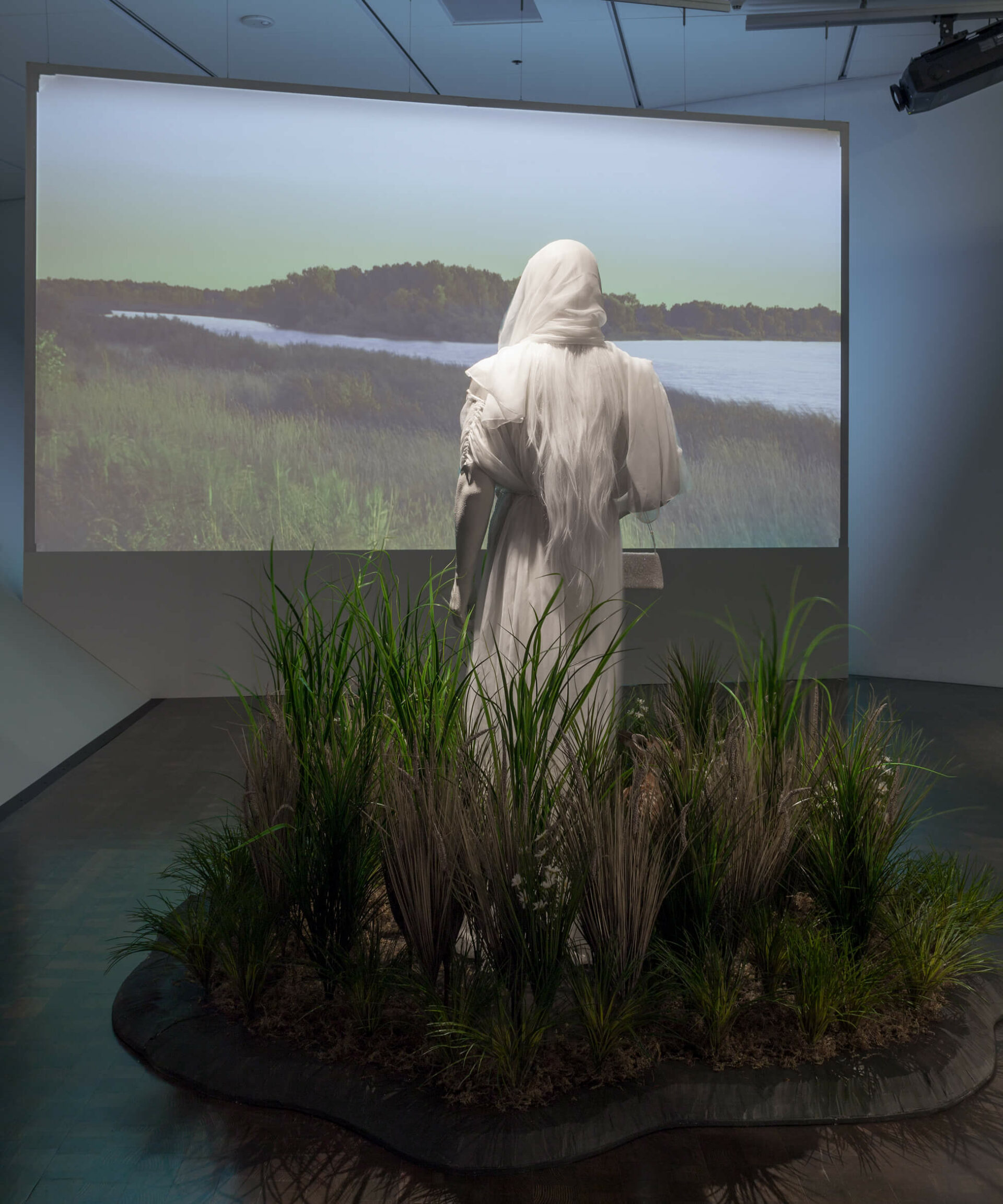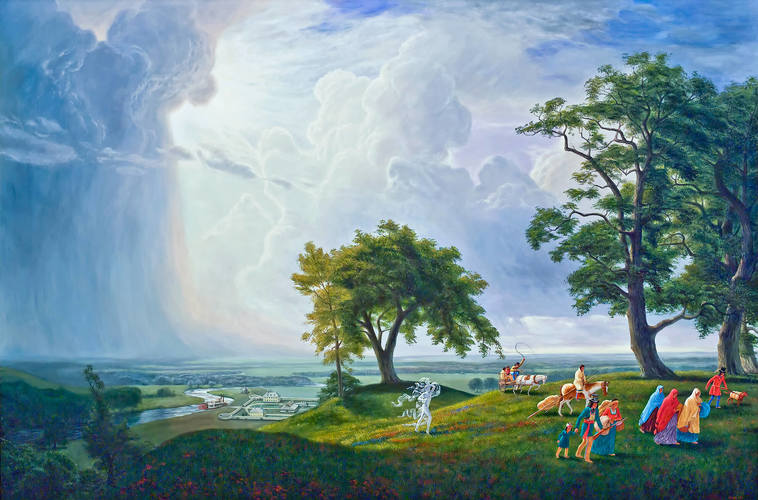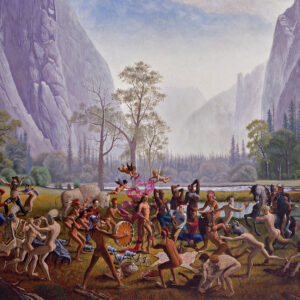Lot’s Wife 2012

Kent Monkman, Lot’s Wife, 2012
Fibreglass, Styrofoam, wood, taxidermy deer, artificial grass, and video projection, 243.8 x 243.8 x 243.8 cm (sculptural element), 274.3 x 487.7 cm (video projection)
Denver Art Museum
Presented like a diorama, the multimedia installation Lot’s Wife includes a mannequin of Kent Monkman as Miss Chief Eagle Testickle, dressed in a white diaphanous tunic and holding a beaded purse. She stands in the midst of long grasses and wildflowers that are native to Manitoba and crafted out of plastic, Styrofoam, and wood. A taxidermy fawn rests in the reeds. The figure gazes at a screen upon which a video is projected of the Red River as it flows south from Lake Winnipeg near St. Peters, Manitoba. The film is accompanied by ambient sounds of the natural environment. The work’s title comes from the Biblical story of Lot’s wife, who turns to take a final, forbidden glance at her home in Sodom before God destroys it. For her defiance, God punishes her by turning her into a pillar of salt. With the installation, Monkman addresses remembrance, memory, and the land.

Lot’s Wife, which premiered in Winnipeg Now at the Winnipeg Art Gallery in 2012, foregrounds the theft of the ancestral territories of Monkman’s family. His great-grandmother, Caroline Everette, grew up in St. Peters. She and her family were forcibly removed and relocated three times, through claims by white colonizers from the Anglican settlement supported by Canadian government policies. St. Peters was a community in the Red River Valley, in what is today southern Manitoba. A band of Saulteaux people, led by Chief Peguis, and Swampy Cree people established it as an agricultural settlement in the early nineteenth century.
The beauty of the image underscores the poignancy of the loss suffered by Everette, Monkman, and, by inference, generations of Indigenous peoples. Multi-layered, the installation addresses both Monkman’s family history of dispossession and Christianity’s negation of Indigenous peoples. It is described by the artist as a “critique of European settler modernity and their creed of amnesia that refutes the idea of erasing memory of place.”
The theme of loss and memory was also evident in a painting Monkman produced earlier, Woe to Those Who Remember From Whence They Came, 2008, in which a prairie vista overlooking Fort Garry sets the stage. A former Hudson’s Bay trading post, this is the site where Treaty No. 1 was made on August 3, 1871, between the Ojibwe and Swampy Cree of Manitoba and the Crown. At the centre of the composition is the apparitional figure of Miss Chief. As she is commanded to leave, she glances back to her homeland. As a result of her disobedience, she is turned into a pillar of salt. While Monkman acknowledges that past events cannot be changed, he proves that the representation of these events can be rewritten.

 About the Author
About the Author
 More Online Art Books
More Online Art Books
 Acknowledgements
Acknowledgements